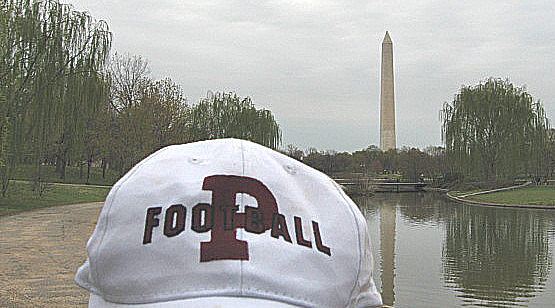|
During
the 1960s and 70s, when PCS class sizes grew from 60 to 150, the Portville, NY school district needed to buy
more school buses and increase the number of bus routes and drivers. Over time, these bus routes defined/reflected the various "suburbs" of the little town of 5,000 souls,
a town surrounding a village of 1,100 residents, contributing to the sociological mix that was K thru 12 Portville. A Portville kid, then and now, was partly identified
by where they lived...and what bus, if any, they road to Education HQ. The Village students had to either walk or get a ride. For the Caya children on North Main, this called
for a two-mile journey...without the (train) "tracks" as a short cut. The bus routes during the peak of Portville's population included:
1)
Rt. 305 Daggatt Hollow
2) Rt. 305 Coon Hollow
3) Rt. 305 Wolf Creek + UB Dam
4) Deer Creek
5) Main Settlement + Butternut Brook
6) South
Portville + River + Gleason
7) Lillibridge
8) Route 417 Portville-Olean Rd
9) Steam Valley + Across the River
10) Promised Land + Weston Mills
11) Haskell
Happy Hollow
12) Haskell Windfall
13) Haskell + Wolf Run The Villagers, who counted for the largest sub-group of students in town, had the widest spectrum of rich and poor
kids, from a sociological point of view.
Even in a small town in Upstate New York, the Village children tended
to have more of an "urban" viewpoint in contrast to the kids who lived up the farm valleys. Like Bolivar,
Cuba, and other nearby small towns, some of the wealthiest families had settled in the village long ago.
In the
village of Portville during the Seventies, it was commonly known that Maple Avenue housed the "Millionaires'
Row" in town. Main Street had well-to-do folks, as did Brooklyn Street and the area near the school.
Temple Street was probably #4 in the village economically behind Maple, Main, and Brooklyn. The side streets like
Colwell, Pine, and others were generally poorer in nature...but there were exceptions...all over town. It all depended
on individuals, families, clans, and the streets/roads.
Things changed dramatically during the 80s, 90s, 00s, and
10s. Many factors and elements have affected the changes in Portville over the past 30-year generation, but the spirit
and the people remain strong and determined.

|
| William Mersereau |
School busing
was a big deal to New York State during this era, and Portville stayed on top of the system.
Representing
one of the top academic schools in Upstate New York, administrators like Lee Frair and Jerry Christopher helped PCS thrive
through its golden years.
And like any other governmental program, it translated into the real-life, sub-division
of the town's kids by road/bus route.
"As a K-12 member of the Coon Hollow bus route, we had a whole array
of individuals and families on my bus - Knowlton Clan, Miller Twins, Buckners, Skivers...it was a huge mix of hormones and
lovely people-groups," notes PCS football coach Gary Swetland.
"I rode the bus for 13 years, have taught
at the school for over 20 years, and I can tell you that the streets, roads, and bus routes have shaped the school system
in an interesting historical and sociological way."
Other long-time students and residents of Portville agree
that location has been very important to one's life at PCS.
Portville farmer and 79 grad, Russ Martin
says, "Things have changed since I graduated, but back in the 70s, we were totally influenced by the older kids on the
bus...for good or for bad. My kids go there now, and I see the influence of location, busing, and all the driving."

|
| William Wheeler |
"Portville
was the best town to grow up in," declares PCS grad and teacher and resident Matthew Milne. "I am so thankful
that I have been able to come back to work and live in this town. PCS has meant so much to so many, and my wife and kids are
blessed to experience this place. But definitely, growing up in the village near the school had a huge impact on my life."
"Geographically, there is only one Portville on the planet," notes Wayne Stephen, a 79 grad who employees
100 folks from the area at Wayne Enterprises in Ceres, PA.
Driven by a love for Portville and people in the Twin
Tiers, Wayne continues to support the school, recently stating that "anyone who went to PCS and had a positive experience
wants to succeed in life and help people along the way. Wherever they end up."
"But in a small
town like this, where you grew up...THE BUS YOU ROAD, and who your family was...they all had an impact on who you were, what
you did, and what you did after graduating from PCS."
TO BE CONTINUED

The 1970s school bus
routes of Portville Central School actually reflected the historical locations of the 1870s one-room schoolhouse located
at the bottom of:
Daggatt Hollow
Coon Hollow
Deer Creek
Haskell
Wolf Run
Main Settlement
Steam Valley
Weston Mills
Portville Village
Millgrove.

|

